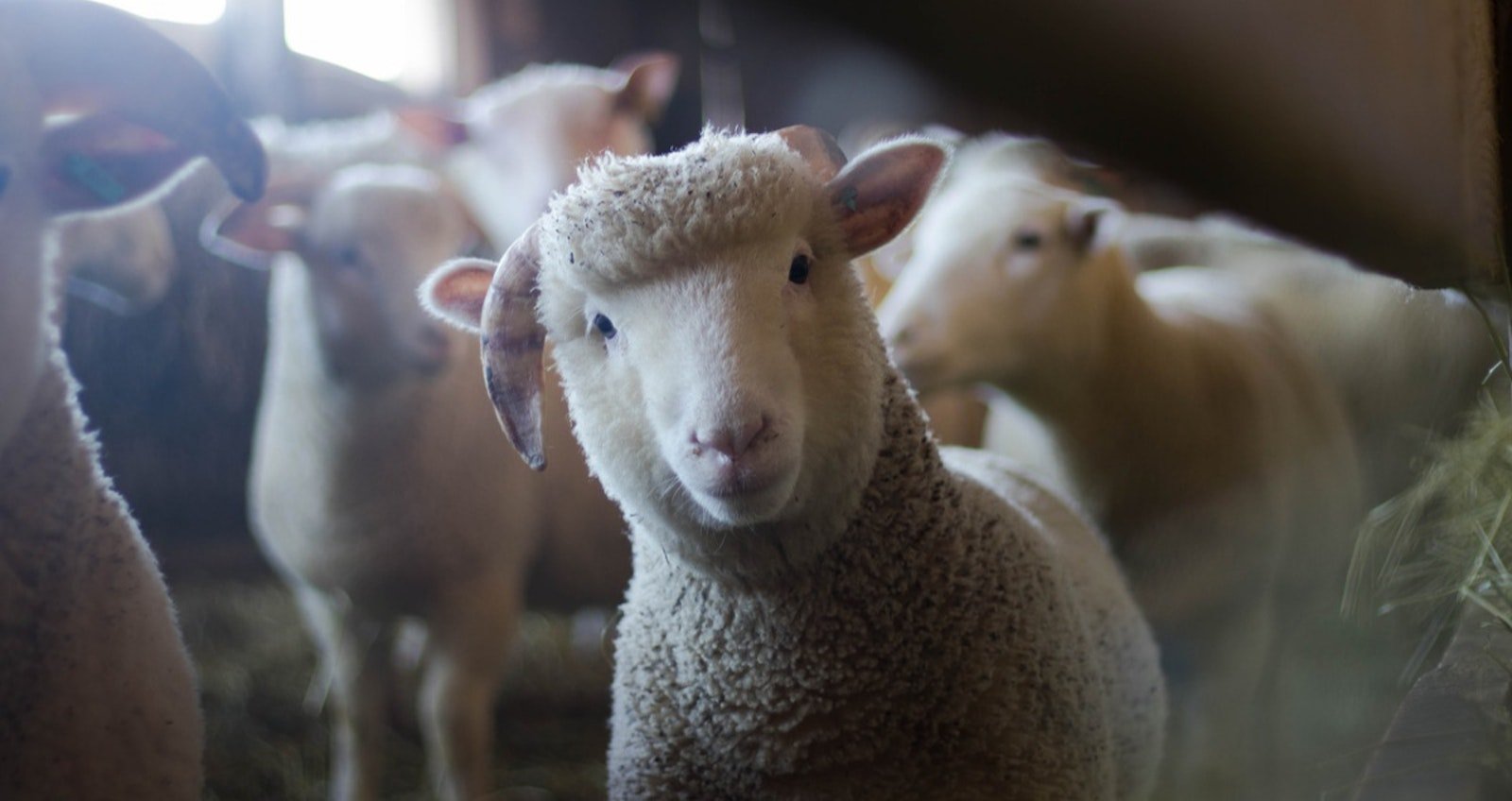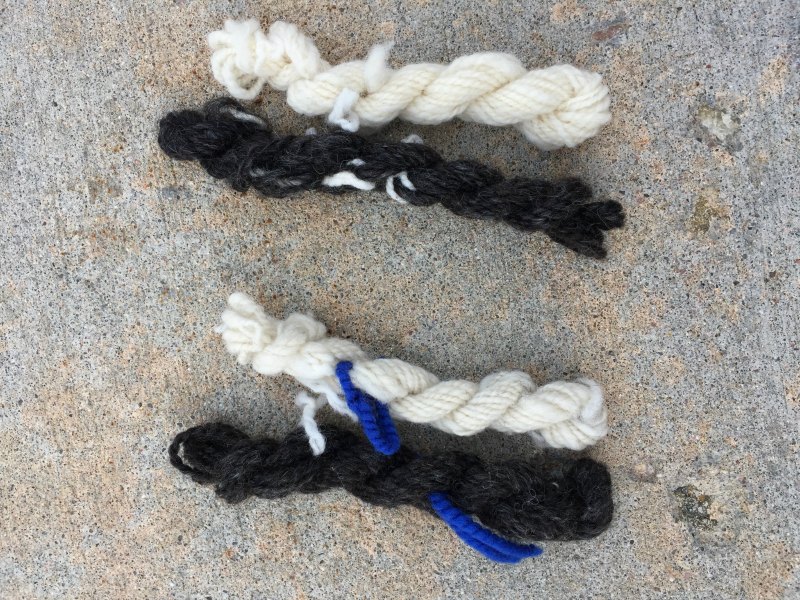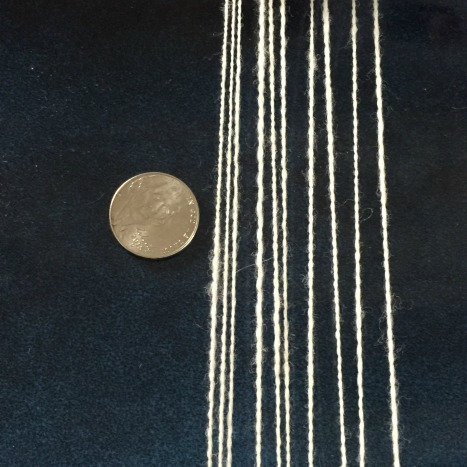Even after 21 years of handspinning, prepping fiber, dyeing, and knitting with my handspun, I still have so much to learn. Yet that learning process adds to the fun! And because it’s me, naturally I’ve systematized my learning process. First and foremost, I make a to-do list. My spinning queue holds more than specific projects; it includes techniques and research questions too. Over the next few years, I’ll pursue some sheep breed studies, study Felicia Lo’s dyeing lessons from Dyeing to Spin and Knit, and play around with yarn design (hopefully moving beyond my lazy excuse for art yarn into cabling, tailspinning, core spinning, and other cool techniques).
My Spinning Queue
Why did I choose these goals for my spinning queue?
Several reasons lie behind my desire for sheep breed studies. I love to meet new sheep and play with their wool. Additionally, any spinning project that forces me out of my default settings adds to my spinning repertoire. (Or am I the only handspinner ever who gets into a rut? My personal rut involves the same finewool breed, spun using the inchworm method and plied into a 2-ply yarn between DK and worsted weight.) Whenever I’ve tried a new breed of sheep or fiber blend, I’ve learned something new and had to pay attention so that I don’t just spin on autopilot. Someday soon, I’ll splurge on a big sampler kit of breeds and experiment like a mad scientist! Then I can take over the world with my spinning knowledge! Mwahahahah!
My other goals, to start dyeing like a pro and to spin textured yarn, relate to each other and to my knitting goals for 2018. Talk about maximum efficiency! I’d already decided that 2018 would be my year of planned pooling in knitting—because my stash now includes a lot of Silver Tabby Ursula yarn, and my darling Ursula kitty turned 15 in May, I want to create a special garment based on her yarn. Then I read past Felicia Lo’s fantastic chapter on dyeing to discover her chapters on “Spinning Color” and “Knitting Color.” Here, she shows how adding texture through spinning or knitting techniques can affect color. My past adventures in color haven’t gone nearly far enough, so I’ll spend 2018 working my way through Dyeing to Spin and Knit (and yes, I’m likely to blog about it on this site). Perhaps if I really understand color, my clown barf phobia will finally go away. Plus, I’ll learn so much!
Efficient sampling: 2 batches of washed fiber (a Lincoln lamb, brown, and some random finewool breed, cream), each prepped by combing and by drumcarding. Then I sat down at the wheel to make mini skeins.
Learning to Learn
All this learning will require a system. As I’ve gotten more interested in the science and art of handspinning, certain meta-learning approaches have really worked for me. (Your mileage may vary, but if my painstakingly planned life helps you, go for it!)
- Sample every step of the spinning process: fibers, prep methods, spinning techniques, dyeing techniques, yarn designs, color combos. There’s nothing you can’t sample!
- Sample efficiently by planning for multiple methods. For instance, prep several small batches of fleece in different ways, and then spin those using different techniques. Wind up baby hanks of handspun and knit multiple swatches before a dyeing session, so you can run some color experiments while working on a bigger dye job. Added bonus: It’s much easier to store those little samples in a journal. I’m more likely to experiment in small doses like this rather than devoting a week or a month to an in-depth study.
- Take notes so you can remember and/or replicate the steps involved in a project. Find a system that works for you (notebooks, file folders, online scrapbooks such as Pinterest or Evernote), but don’t skip this step. All too often, I’ve gotten just the results I want for a project, and because I’m so excited to keep going, I didn’t make any notes. Then life intervened, and the project moved to a back burner. When I returned to it, I couldn’t remember what I did. As I get older, I forget more stuff more often, but if I can simply remember to take notes, it’s all good!
- Set some goals. You don’t have to fulfill them for any particular deadline, but make a spinning queue for yourself.
I tied the 2 drumcarded skeins with special ties so I’d remember how I prepped the fiber. Then these 4 skeins sat for a while. I should have taken notes, because it took me a while to remember that blue meant drumcarding, and all white ties meant combing.
I want to close the door on my Closet Full of Sheep with 2 final notes: a humblebrag and a humbling life lesson. When I began writing these posts in January 2017, it seemed unlikely that I could ever spin for a wedding ring shawl. But when my new e-spinner arrived in March, and I couldn’t bring myself to shut it off, I spun a 2-ply laceweight of 28 wpi from some mystery wool. In terms of fineness and consistency, I don’t think I’ve ever made a better yarn. Now I’m adding a major handspun lace project to my spinning queue. (Surprise! It’s Felicia Lo’s Summer Garden Pi Shawl from her book! See how everything comes together in the end?)
Seven grams of 2-ply laceweight at 28 wpi! It’s destined for some special tiny lace project.
Fortunately, if I ever get too big for my britches, my handspun Talia vest will remind me to be more humble. Everything in this project went smoothly: Wensleydale roving became a gorgeous 2-ply yarn (called, naturally, Wallace & Gromit), which then became SweaterBabe’s delightful Talia vest. Then I plunked my vest into the dye pot planning for a medium-gray color. However, I’d forgotten the first rule of dyeing: you can add more color, but you can’t take it away. Too much black dye! While it ain’t over ‘til it’s over in dyeing, there’s no going back from black. And with that word of wisdom, let’s close the door on my closet full of sheep.
There’s no going back.
—Deb





